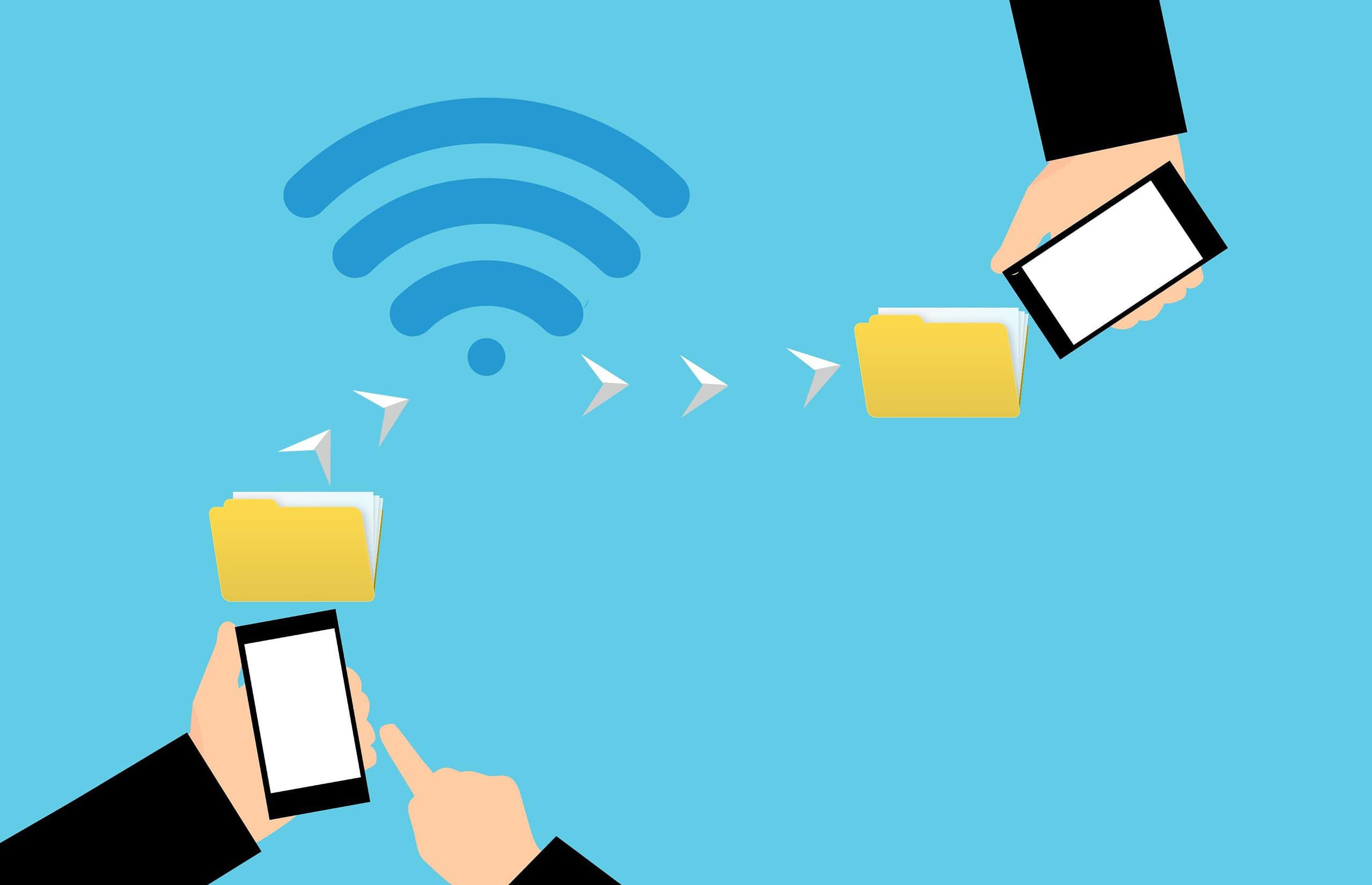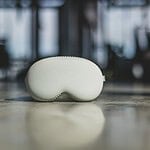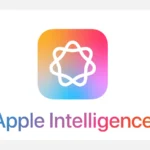Sharing your info between Apple devices can be helpful, but it’s not always what you want. Maybe you need to keep work and personal items separate, or you share devices with family members. You can stop sharing data between your iPhone, iPad, and Mac by adjusting your iCloud settings and turning off specific sharing features like Handoff and device communication.
Many Apple users don’t realize they have control over what syncs between their devices. When you set up a new Apple device with your Apple ID, it automatically connects to your existing ecosystem. This means your messages, photos, and even browsing history may show up across all devices. But you can stop this sharing without giving up the benefits of having multiple Apple products.
The process is simple once you know where to look. You can turn off specific syncing features for certain apps, disable Handoff completely, or even set up separate Apple IDs for different devices if needed. This gives you more privacy and control over your digital life.
How to Stop Sharing Data Between iPhone and iPad or Mac
Apple devices are designed to work seamlessly together, but this interconnectedness can sometimes lead to unintended data sharing. Whether you’re looking to maintain privacy or simply prefer to keep your devices separate, here’s how you can stop data from syncing across your iPhone, iPad, and Mac.
Disable iCloud Sync for Specific Apps
To prevent specific apps from syncing data between devices:
- Open Settings on your iPhone or iPad.
- Tap your Apple ID at the top.
- Select iCloud.
- Under Apps Using iCloud, toggle off the apps you don’t want to sync.
For example, turning off iCloud for Safari will stop your browsing history and open tabs from syncing across devices.
Turn Off Handoff
Handoff allows you to start a task on one device and continue it on another. To disable this feature:
- On iPhone/iPad:
- Go to Settings > General > AirPlay & Handoff.
- Toggle off Handoff.
- On Mac:
- Open System Settings.
- Navigate to General > AirDrop & Handoff.
- Toggle off Allow Handoff between this Mac and your iCloud devices.
Stop Text Message Forwarding
If your iPad or Mac is receiving text messages meant for your iPhone:
- On your iPhone, go to Settings > Messages > Text Message Forwarding.
- Toggle off the devices you don’t want to receive messages.
Disable iCloud Photos
To prevent your photos from syncing across devices:
- Open Settings on your iPhone or iPad.
- Tap your Apple ID.
- Select iCloud > Photos.
- Toggle off iCloud Photos.
Turn Off AirDrop
AirDrop allows for quick file sharing between Apple devices. To disable it:
- On iPhone/iPad:
- Open Settings > General > AirDrop.
- Select Receiving Off.
- On Mac:
- Open Finder.
- Click on AirDrop in the sidebar.
- Set Allow me to be discovered by to No One.
Sign Out of iCloud
For a complete separation:
- Open Settings on your device.
- Tap your Apple ID.
- Scroll down and tap Sign Out.
Note: This will remove all iCloud data from the device and disable features like Find My iPhone.
Summary Table
| Feature | iPhone/iPad Path | Mac Path |
|---|---|---|
| iCloud Sync | Settings > Apple ID > iCloud | System Settings > Apple ID > iCloud |
| Handoff | Settings > General > AirPlay & Handoff | System Settings > General > AirDrop & Handoff |
| Text Message Forwarding | Settings > Messages > Text Message Forwarding | N/A |
| iCloud Photos | Settings > Apple ID > iCloud > Photos | System Settings > Apple ID > iCloud > Photos |
| AirDrop | Settings > General > AirDrop | Finder > AirDrop |
| Sign Out of iCloud | Settings > Apple ID > Sign Out | System Settings > Apple ID > Overview > Sign Out |
By adjusting these settings, you can control the flow of information between your Apple devices, ensuring your data stays where you want it.
Key Takeaways
- Turn off iCloud syncing for specific apps in Settings to stop sharing that data between devices.
- Disable Handoff and Bluetooth connections to prevent automatic activity transfer between your Apple devices.
- Manage location sharing and shared albums separately to control which personal information appears across your devices.
Understanding the Apple Ecosystem
The Apple ecosystem connects your devices to work together seamlessly. When you use an iPhone, iPad, and Mac together, they can share information automatically.
At the center of this system is your Apple ID. This single account links all your devices and services together.
iCloud stores your photos, documents, and app data. When turned on, it keeps everything in sync across devices automatically.
Key Features of the Apple Ecosystem:
- Handoff – Start tasks on one device and finish on another
- Universal Clipboard – Copy on iPhone, paste on Mac
- AirDrop – Share files between nearby Apple devices
- Continuity Camera – Use iPhone as a webcam for Mac
Sometimes this automatic sharing isn’t wanted. A person might not want their browsing history or text messages to appear on all devices.
Family Sharing creates another layer of connectivity. Up to six family members can share purchases while keeping personal data separate.
To control what gets shared, users need to understand which iCloud services are turned on. Each service (Photos, Contacts, Safari) can be toggled separately.
The Apple ecosystem works best when people know which sharing features to use and which to turn off. This balance creates a helpful connection without sharing too much.
Managing iCloud Settings
iCloud settings control how your Apple devices share information with each other. Changing these settings lets you decide exactly what syncs between your iPhone, iPad, and Mac.
Configure iCloud on iPhone and iPad
To manage iCloud on your iPhone or iPad, start by opening the Settings app. Tap on your name at the top of the screen, then select iCloud. This menu shows all apps using iCloud to store and sync data.
You can turn off specific app syncing by toggling the switches next to each app name. For example, if you don’t want your Notes to sync between devices, simply turn off the Notes toggle.
For more privacy, you can also control whether your data is accessible on the web. To do this, go to your iCloud settings and turn off “Access iCloud Data on the Web.”
Remember that turning off sync for an app doesn’t delete existing data—it just stops future updates from moving between devices.
Adjust iCloud Photo Library Settings
iCloud Photo Library can take up significant storage space when syncing across devices. To manage these settings, go to Settings > your name > iCloud > Photos.
You have several options:
- iCloud Photos: Toggle this off to stop all photo syncing
- Optimize iPhone Storage: Saves space by keeping smaller versions on device
- Download and Keep Originals: Stores full-quality photos on your device
If you want to stop photos from one device appearing on others but still back them up, consider using a different Apple ID for that device’s photo library.
For shared albums, you can control these separately in the “Shared Albums” toggle, allowing family photos to sync while keeping personal ones private.
Manage iCloud Backup Options
iCloud Backup saves important data from your device to the cloud. To control what gets backed up, go to Settings > your name > iCloud > iCloud Backup.
Turn iCloud Backup on or off completely with the main toggle. When enabled, your device automatically backs up when charging and connected to Wi-Fi.
To choose specific items to include in your backup:
- Go to Settings > your name > iCloud
- Tap “Manage Storage” > “Backups”
- Select your device
- Under “Choose Data to Back Up,” toggle apps on/off
For messages specifically, you can disable syncing by going to Settings > your name > iCloud > Messages and turning off “Messages in iCloud.”
Remember that some critical information like Health data requires iCloud Backup to transfer between devices.
Decoupling Your Devices
Separating your Apple devices helps keep your personal data from automatically syncing between them. This process gives you more control over which information is shared and which stays private on each device.
Create Separate Apple IDs
Using different Apple IDs is the most effective way to stop data sharing between devices. Each Apple ID maintains its own separate iCloud storage, apps, and settings.
- Go to Settings on your device
- Tap your name at the top
- Scroll down and tap Sign Out
- Open the App Store app
- Tap your profile icon
- Select Create New Apple ID
- Follow the on-screen instructions
You can keep certain devices on one ID while others use a different ID. This works well for families who want to share some purchases but keep messages and photos private.
Remember that purchased apps and subscriptions won’t transfer to the new Apple ID. You’ll need to buy them again if needed.
Remove Apple ID from Devices
Taking your Apple ID off a device stops it from accessing your iCloud data. This is helpful when you want to keep using both devices but don’t want them to share information.
- Open Settings
- Tap your name at the top
- Scroll to the bottom and tap Sign Out
- Enter your Apple ID password
- Choose which data to keep on the device (Photos, Contacts, etc.)
- Tap Sign Out again to confirm
After signing out, the device will no longer receive your messages, emails, or other iCloud data. Any new data created on that device won’t upload to your iCloud account.
This method lets you keep using the device with a different Apple ID or without one entirely.
Unlink Two iPhones
If you have two iPhones using the same Apple ID, you can stop sharing your data between them without completely separating accounts.
To unlink specific features:
- Go to Settings > [your name] > iCloud
- Toggle off services you don’t want to sync:
- Photos
- Contacts
- Calendars
- Reminders
- Messages
You can also turn off Handoff features that allow starting tasks on one device and finishing on another:
- Go to Settings > General > AirPlay & Handoff
- Turn off Handoff
This approach keeps both phones on the same Apple ID while preventing automatic data sharing between devices.
Unsync iPhone from iPad
Many people want to unsync their iPhone from iPad while keeping both on the same account. This gives more privacy without managing multiple Apple IDs.
The simplest way to stop iPad-iPhone syncing:
- On either device, go to Settings > [your name] > iCloud
- Turn off specific apps you don’t want to sync
- For messages, go to Settings > Messages > Text Message Forwarding
- Toggle off the device you don’t want to receive messages
For photos, you can disable photo sharing by turning off iCloud Photos in the Photos section of iCloud settings.
You can also disable Find My features separately on either device to prevent location tracking between them. This stops your iPad from showing where your iPhone is and vice versa.
Opting Out of Shared Features
Apple’s ecosystem makes it easy to share data across devices, but sometimes you might want more privacy or separation between your iPhone, iPad, and Mac. These settings let you control exactly what gets shared.
Disable Handoff Feature
The Handoff feature lets you start work on one device and continue on another. This can be helpful but might not be wanted in all situations.
To turn off Handoff on iPhone or iPad:
- Open Settings
- Tap General
- Select AirPlay & Handoff
- Toggle off Handoff
For Mac computers:
- Click the Apple menu in the top left
- Select System Settings or System Preferences
- Click General
- Find and uncheck Allow Handoff between this Mac and your iCloud devices
Turning off Bluetooth can also stop Handoff functions. This gives you a quick way to temporarily disable the feature without changing settings.
Stop Sharing Photos
Your photo library might contain personal images you don’t want synced across all devices. Stopping photo sharing is simple.
- Go to Settings on your iPhone or iPad
- Tap your Apple ID at the top
- Select iCloud
- Tap Photos
- Turn off iCloud Photos
You can also be selective about location sharing in photos. To stop sharing your location:
- Tap Me in the Find My app
- Toggle off Share My Location
For shared albums, you can remove specific people by selecting them and tapping Stop Sharing.
Turn Off iCloud Drive and App Store Purchases
iCloud syncing makes your data available everywhere, including app data and purchases. This can be turned off for more privacy.
To stop syncing App Store purchases:
- Go to Settings
- Tap your Apple ID
- Select Media & Purchases
- Turn off Automatic Downloads for apps, music, books, or updates
For iCloud Drive:
- Open Settings
- Tap your Apple ID
- Select iCloud
- Turn off iCloud Drive
You can also be selective by toggling individual apps in the iCloud settings. This lets you keep syncing important apps while stopping others.
Remember that signing out of iCloud completely will stop all syncing, but you’ll lose access to services like Find My and iCloud backup.
Handling Text Messages and Calls
Apple’s ecosystem allows seamless communication across devices, but sometimes you want to keep messages and calls separate. Managing these settings can help maintain privacy and prevent notification overload.
Stop Syncing Text Messages and iMessage
To stop sharing messages between your iPhone and other Apple devices, you’ll need to adjust a few settings. This prevents your private conversations from appearing everywhere.
On your iPhone, go to Settings → Messages → Text Message Forwarding. Here you can disable forwarding to specific devices like your Mac or iPad. Toggle off any device you don’t want receiving your SMS messages.
For iMessage, go to Settings → Messages and toggle off iMessage completely if you want to stop all sharing. For a less drastic approach, you can:
- Sign out of your Apple ID on devices where you don’t want messages
- Turn off iMessage on specific devices
- Use different Apple IDs for different devices
You can also disable SMS Forwarding directly from your iPhone to stop texts from showing up on your Mac.
Control Call Handoff Between Devices
Phone calls can also bounce between Apple devices, which might not always be convenient. Take control of this feature with a few simple steps.
To stop calls from ringing on all devices, go to Settings → Phone → Calls on Other Devices. Here you can turn off the main toggle or selectively disable specific devices.
For FaceTime calls, the process is similar:
- Open Settings
- Tap FaceTime
- Turn off Calls from iPhone
You can also stop information syncing by adjusting your iCloud settings. Go to Settings → [your name] → iCloud and turn off syncing for the Phone app.
If you’re using macOS, open FaceTime preferences and uncheck the option to take calls from iPhone. This keeps incoming calls on your phone only.
Privacy and Security Considerations
When managing data sharing between Apple devices, protecting your personal information should be a top priority. Understanding privacy settings and implementing security measures will help keep your data safe while still enjoying the benefits of your devices.
Address Privacy Concerns
Apple offers several ways to control what you share between your devices. Start by checking your iCloud settings to see what data syncs automatically. You can turn off specific app syncing if you want to keep certain information separate.
Turn off Siri sharing if you don’t want your Siri data to move between devices. This helps keep voice commands and preferences device-specific.
For more complete privacy control:
- Go to Settings > Privacy & Security
- Review app permissions regularly
- Turn off ad ID tracking to limit targeted ads
- Disable analytics sharing
Remember that Apple’s privacy settings are designed to put you in control of your data. You can choose what gets shared and when.
Secure Your iOS Update and Settings
Keeping your devices updated is key to maintaining security. The latest iOS updates patch security holes that could expose your data.
Enable automatic updates by going to Settings > General > Software Update > Automatic Updates. This ensures you always have the latest protections.
Password protection is another important step:
- Use strong, unique passwords for Apple ID
- Enable two-factor authentication
- Set up Screen Time with content restrictions
You can also reset Location & Privacy settings if you suspect privacy issues. This forces all apps to request permissions again, giving you a fresh start.
When transferring data between devices over WiFi, be aware of potential security risks. Using encrypted connections helps protect information during transfers.
Alternative Solutions for Device Management
When you want more control over your data sharing between Apple devices, you can explore options beyond Apple’s built-in settings. These alternatives give you more flexibility and customization for managing your information across devices.
Use Third-Party Cloud Services
Third-party cloud services offer good options for controlling what data moves between your devices. Unlike Apple’s all-or-nothing approach, these services let you pick exactly what syncs where.
Dropbox, Google Drive, and OneDrive give you separate folders for different devices. You can create a “Phone Only” folder that won’t show up on your iPad. This helps keep work and personal stuff separate.
These services have these benefits:
- Selective syncing – Choose which folders appear on which devices
- Manual transfers – Move files only when you want to
- Cross-platform support – Works with both Apple and non-Apple devices
You can also set up automatic backups that don’t sync to other devices. This keeps your data safe without mixing everything together.
Manage Devices with Multcloud
Multcloud is a powerful tool for people who use multiple cloud services. It works as a central hub to control all your cloud accounts from one place.
With Multcloud, you can:
- Connect multiple accounts – Link iCloud, Google Drive, and others
- Transfer selectively – Move only specific files between services
- Schedule transfers – Set up automatic moves at certain times
- Sync one-way only – Keep source files without creating duplicates
Managing your devices becomes easier when you can see all your storage in one dashboard. You don’t need to switch between apps to move your data around.
Multcloud also lets you create separate “paths” for different devices. Your iPhone photos can go to one folder while iPad documents go somewhere else entirely.
Transitioning to Other Platforms
Sometimes you might need to switch from Apple devices to other platforms while maintaining your data. This change requires careful planning to ensure your information transfers correctly.
Migrating to an Android Device
Moving from an iPhone to an Android device requires several steps to transfer your data properly. First, download Google Drive on your iPhone and back up your contacts, calendar, and photos.
For messages, third-party apps like “SMS Backup & Restore” can help transfer text messages. Your iCloud email can be added to the Gmail app on Android.
- Use Google Photos app on iPhone
- Enable backup
- Sign in with same Google account on Android
For music and apps:
- Download streaming apps like Spotify or YouTube Music
- Re-download apps from Google Play Store
Important note: Some Apple-specific data won’t transfer directly. iMessage conversations stay with Apple, and purchased apps must be bought again on Google Play.
Remember to deactivate iMessage before switching to prevent message delivery issues. This helps texts arrive as SMS instead of being trapped in Apple’s system.
Frequently Asked Questions
Managing data sharing between Apple devices can be tricky. These questions cover the most common issues people face when trying to keep their devices from automatically sharing information.
How can I disable Handoff to stop automatic data synchronization between my iPhone and other Apple devices?
Handoff is a feature that lets you start work on one device and continue on another. To turn it off, go to Settings on your iPhone, then tap General.
Scroll down and tap AirPlay & Handoff. Toggle off the Handoff switch to stop this automatic sharing between devices.
You can also turn off Bluetooth to stop Handoff from working, though this will affect other Bluetooth functions too.
What steps are needed to prevent my Mac from automatically sharing and receiving data with my iPhone?
On your Mac, click the Apple menu in the top left corner and select System Preferences (or System Settings in newer versions).
Click General, then look for AirDrop & Handoff options. Uncheck the “Allow Handoff between this Mac and your iCloud devices” box.
For more control, you might need to adjust your iCloud settings as well by going to Apple ID settings and turning off specific sync options.
How do I turn off app sync between my iPhone and iPad to maintain separate application data?
To stop apps from syncing data, open Settings on your iPhone and tap your Apple ID at the top. Then tap iCloud.
Scroll through the list of apps and toggle off any apps you don’t want to sync. This will stop sharing data between your devices for those specific apps.
Remember that turning off sync might delete existing data from iCloud, so back up important information first.
Is it possible to deactivate iCloud sharing on specific apps to stop them from syncing across my Apple devices?
Yes, you can control which apps use iCloud on an app-by-app basis. Open Settings and tap on your Apple ID at the top of the screen.
Tap iCloud, then look at the list of apps. Toggle off any apps you don’t want to sync across devices.
This gives you fine control over what data moves between your devices through iCloud.
How can I configure my iPhone settings to stop sharing Safari browsing sessions with my iPad or Mac?
To stop sharing Safari data, open Settings on your iPhone and tap on your name at the top. Then tap iCloud.
Find Safari in the app list and toggle it off. This will prevent Safari from sharing your browsing history, bookmarks, and open tabs with other devices.
When prompted, choose whether to keep Safari data on your iPhone or delete it.
What is the process for halting the auto-sync of photos and videos between my iPhone and other connected Apple devices?
To stop photos from syncing, go to Settings on your iPhone and tap your Apple ID. Then tap iCloud.
Tap Photos and toggle off “iCloud Photos” to stop all photo syncing. You can also turn off specific features like Shared Albums if you want more control.
For more privacy, you can also stop location sharing in the Photos app by managing your shared albums settings.







